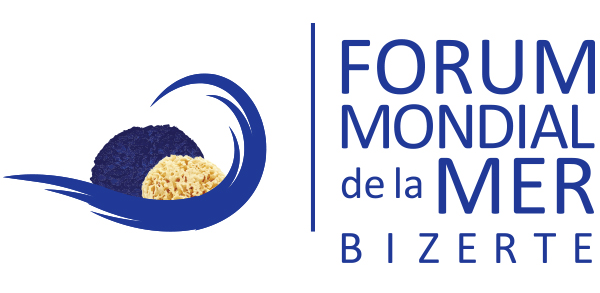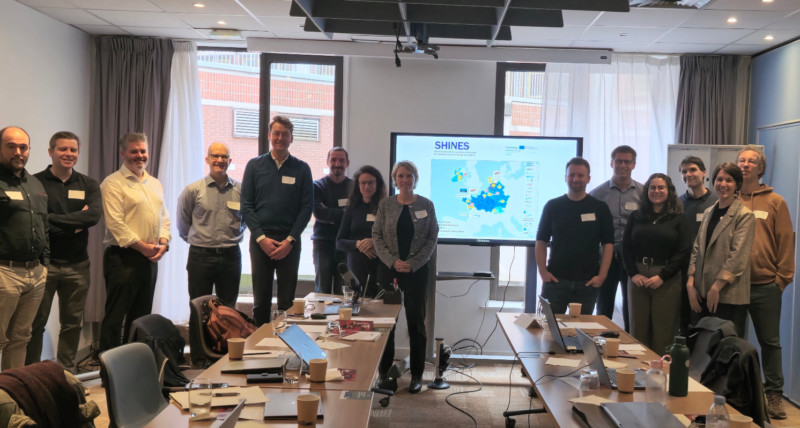
Airing on Canal+, the documentary Plastic Odyssey – Mission Pacific reveals the behind-the-scenes efforts to clean one of the most polluted places in the world. This was an opportunity to discuss the future of the fight against plastic pollution with Simon Bernard, co-founder of Plastic Odyssey.
This remote island in the Pacific Ocean, known as one of the most polluted places on Earth, was deemed impossible to clean. In 2019, an expedition attempted to rid Henderson Atoll of waste, collecting six tons of trash from just one of its beaches. However, the surrounding coral reef made the mission a failure.
Five years later, a team from Plastic Odyssey took on the challenge—and succeeded. With creativity and determination, they even used a parachute to tow rafts filled with collected waste. This delicate yet spectacular feat is documented in Plastic Odyssey – Mission Pacific, airing on Canal+. This is yet another achievement for the organization, whose research vessel has been navigating the oceans since 2022 to « discover, document, and share concrete solutions to end the plastic waste crisis. »
During a visit to Paris last December, Simon Bernard, co-founder of Plastic Odyssey, spoke with Usbek & Rica about the future of the fight against plastic pollution.
« Trying to clean the oceans is utopian, » your colleague Alexandre Dechelotte told Usbek & Rica in 2018. What was the goal of your cleanup mission on Henderson Island?
Simon Bernard:
In one week, with a team of ten people, we managed to clean an entire UNESCO site with one of the world’s highest concentrations of plastic waste. This is a bit of a departure from our usual work, but we felt it was important to restore these sanctuaries of biodiversity—there are about fifty such places on Earth. It would be a shame to leave them as they are.
We found that on these islands, plastic concentrations on the coasts are 400 times higher than in the so-called « Great Pacific Garbage Patch. » Scientific studies show that these islands act as natural traps, capturing and storing marine pollution.
Moreover, if we want to stop plastic pollution, we need to understand where it comes from. Today, we don’t fully know. On Henderson Island, we estimate that 90 to 100% of the collected waste comes from fishing: about one-third nets, one-third buoys, and one-third rigid plastic, likely from fishing crates. We will be publishing a more detailed scientific study on this soon.
Another ocean cleanup project, The Ocean Cleanup, claims that the Great Pacific Garbage Patch could be cleaned up by 2034. Do you believe that?
Simon Bernard:
Yes, that sounds plausible because, in reality, there isn’t that much plastic in that area. The amount of plastic in the garbage patch is roughly equivalent to what enters the ocean every few days—19 tons per minute. (The Ocean Cleanup estimates that over 100,000 tons of plastic are in the garbage patch.)
The organization estimates that it would take $7.5 billion to clean it up. On our end, we’ve calculated that it would take between €7 billion and €10 billion to fund enough micro-recycling plants to stop plastic pollution altogether—meaning the 20 million tons of plastic dumped into the ocean annually. With that amount of money, we could stop the problem at its source. If we’re going to start somewhere, it should be here. Every solution helps, but unfortunately, funding is limited.
« If we want to clean up ocean plastic, we must start where it’s most concentrated. »
If we want to clean up plastic from the ocean, we should start where it’s most concentrated. Cleaning up natural traps like coasts and islands is far more effective than dragging nets behind boats in areas where plastic is sparse.
What about microplastics and even nanoplastics? Are there any strategies to tackle that issue?
Simon Bernard:
Microplastics make up 10% of plastic waste by weight (but 90% in terms of the number of particles). When it’s at the micro level, we can still filter it, but at the nano level, we’re dealing with particles so small that even the blood-brain barrier can’t stop them.
There are potential solutions for removing these particles, but what’s the point? The ocean is full of plankton and marine life—we can’t filter the entire ocean. Prioritization is key: first, we remove the macro-waste, and then, if we ever have the time and resources, we can consider filtering all the ocean’s water while somehow separating plankton from plastic.
With the Plastic Odyssey expedition, you’ve set up micro-recycling plants in multiple countries, capable of processing between 200 and 600 tons of waste per year. Could this low-tech model be scaled up? Is it complementary to large recycling plants?
Simon Bernard:
Yes, I think it’s complementary. In the countries we operate in, large recycling plants are scarce because transporting waste isn’t cost-effective. Unlike aluminum or copper, collecting and transporting plastic to a major plant is far too expensive. Almost no one does it—except for PET water bottles, which are highly recyclable and valuable. Large recycling companies like Veolia focus on highly specific waste streams.
There’s also informal recycling, but it doesn’t cover all plastics. That’s why, in our micro-plants, we focus on low-value plastics that would otherwise never be collected—bags, plastic films, etc. Our idea is to decentralize the process, reducing waste transportation by bringing the recycling facility to the source.
Our model works like a franchise: we build the machines, secure funding from banks and customers, organize waste collection, and then deploy the micro-plants. Entrepreneurs who receive training only need to operate the facility. In three to four years, we aim to have around 100 plants up and running.
What happens to the recycled waste?
Simon Bernard:
We can turn it into several products. We’ve produced boards for making furniture, pallets, benches, and trash bins. We’re still in the early stages, experimenting. We recently created a catalog of finished products. The challenge is finding products that can be sold in large quantities and won’t turn back into waste.
Could this model also work in France?
Simon Bernard:
It’s already happening. Le Pavé, for example, is a fantastic initiative—they made the podiums for the Olympics. In France, there are about ten companies working in this space. However, since labor costs are higher, they need to create high-end, well-designed, and expensive products to remain profitable.
The Plastic Odyssey model is better suited for low-income countries, where recycling creates jobs. In Senegal, for example, 50% of young people are unemployed. Our ten planned recycling plants there will create 200 direct jobs, plus many more in waste collection, sales, and distribution.
Will plastic recycling become economically viable in the future?
Simon Bernard:
The goal is to make our recycling plants self-sustaining—they don’t generate profit yet. No one is going to get rich from plastic recycling, but we aim to eliminate dependence on subsidies so we can scale up. We need an economic model that works, creates jobs, recycles plastic, and potentially generates carbon credits (for preventing plastic from being burned in open dumps).
The negotiations for the first global treaty on plastic pollution failed in December. Should we stop relying on diplomacy to solve this crisis?
Simon Bernard:
Everyone knew it was going to be a fiasco, which is why we didn’t even attend. We prefer practical, fast, and effective solutions. We’re not big on advocacy, endless debates, or empty promises—it’s frustrating. Look at COP21, which was considered a huge success; ten years later, not much has changed.
For plastic pollution, we are still very far from achieving an agreement like the Paris Climate Accord.
If the legislative path is a dead end, should we then focus on changing individual behaviors as a priority?
Simon Bernard:
The problem lies in what we call the « triangle of inaction »: consumers, politicians, and industries all pass the responsibility to each other. This cycle can go on indefinitely. That’s why we try to act on all three, but in reality, we have very few levers of action over politicians and industries, as they will only change if forced by law. We realize that the last avenue available in these countries is through consumers.
Plastic Odyssey is sponsored by several companies such as L’Occitane, the Crédit Agricole bank, and the shipping giant CMA CGM. How do you avoid greenwashing from companies that are not always exemplary in environmental matters?
Simon Bernard:
We try to work with companies that are not heading in the wrong direction and that have no interest in the persistence of plastic pollution. Our model is based on sponsorship, but in reality, there is very little communication from these companies, as they rarely use their contribution to the project for publicity.



